The first Death Valley Photography workshop of 2022 took place from March 27 to March 31. It was my pleasure to mentor and guide 7 talented photographers. We were joined on this trip by my brother, a retired USGS scientist who shared his knowledge of the geology and natural history of the valley.

Sunday afternoon when the workshop began the winds were blowing the sand in the dunes. We walked a short way into the dunes risking the occasional gust of wind with accompanying sand blast to see what photos might be found.
Most important was that the winds would be blowing all night. Sweeping the dunes free of footprints.
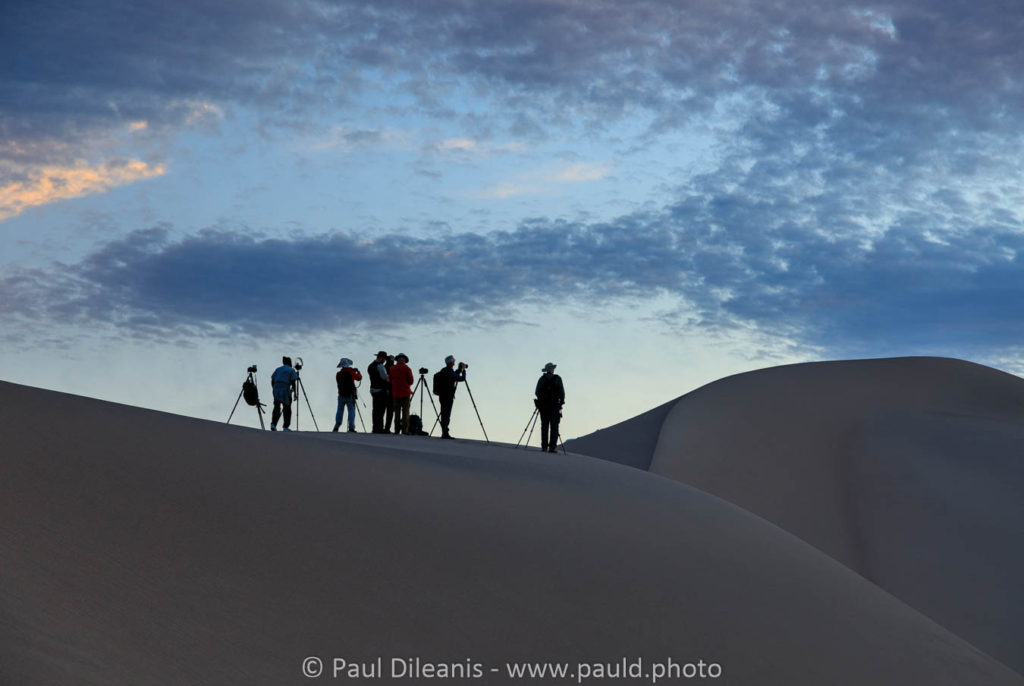
Monday morning, the first sunrise during the workshop, we hiked out into the dunes early to catch the first light.

The winds had done their job. Footprints that had been there a day earlier were gone.
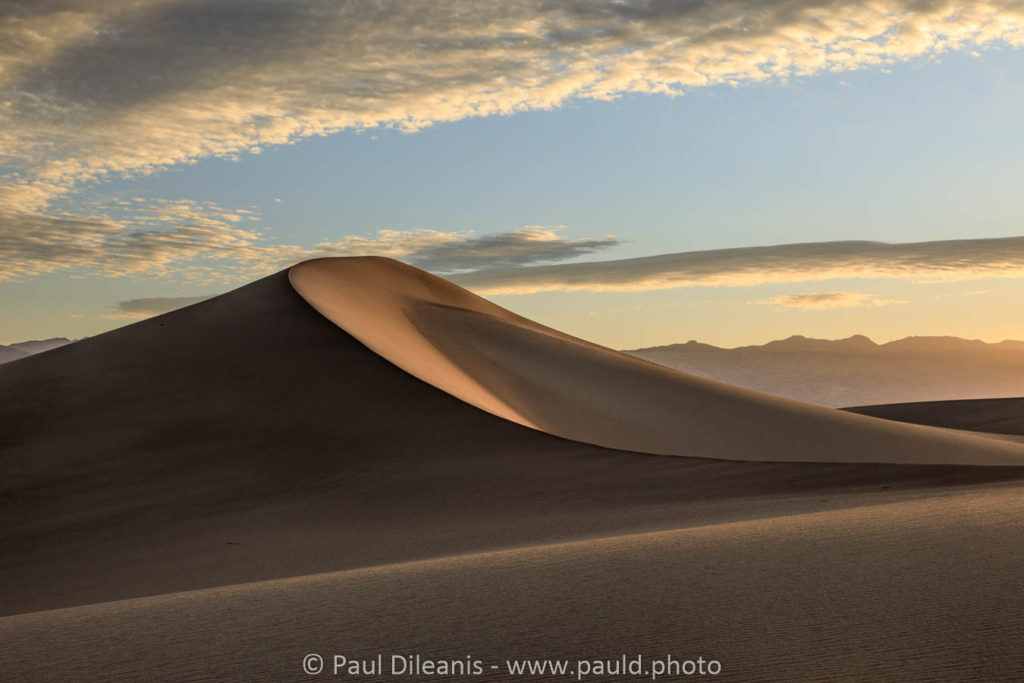
We were rewarded with a pristine landscape from which to capture our images.
Artist Palette

With rain in the forecast for late Monday we headed to the Artist Palette. These cliffs are splashed with rich colors from mineral deposits which gives them their name.
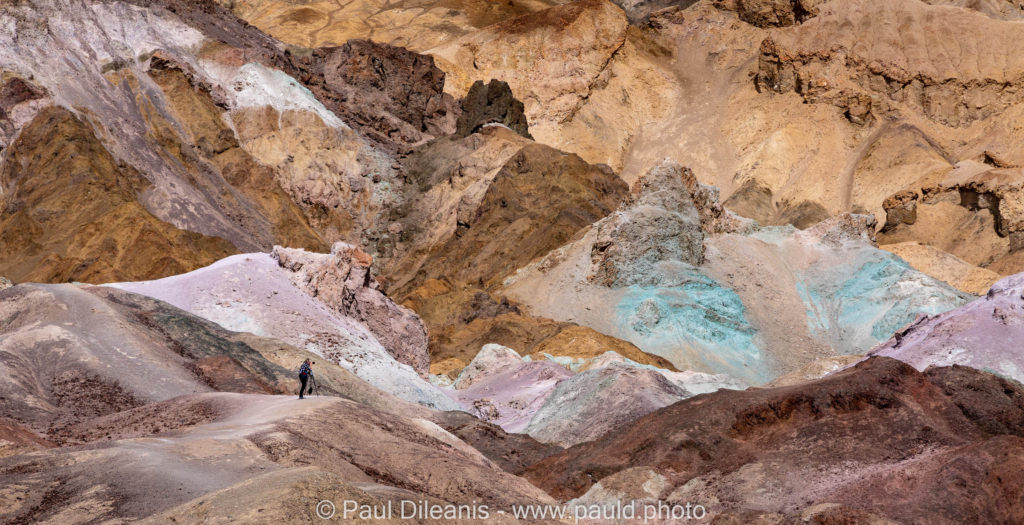
To provide you with an idea of the scale here is a closer photograph. Look closely in the lower left of the photograph above and you can see one of the photographers from the workshop with his tripod.

On the way back to the hotel we could see the sand blowing in the dunes. This panoramic shot was taken from the roadside with a 300 mm lens. One of the major complaints I hear from photographers who have visited Death Valley is that it is difficult to find footprint free dunes. This was an opportunity not to miss. Made a note to myself to return to the dunes one more time if possible to take advantage of the wind scoured dunes.
Mud Cracks
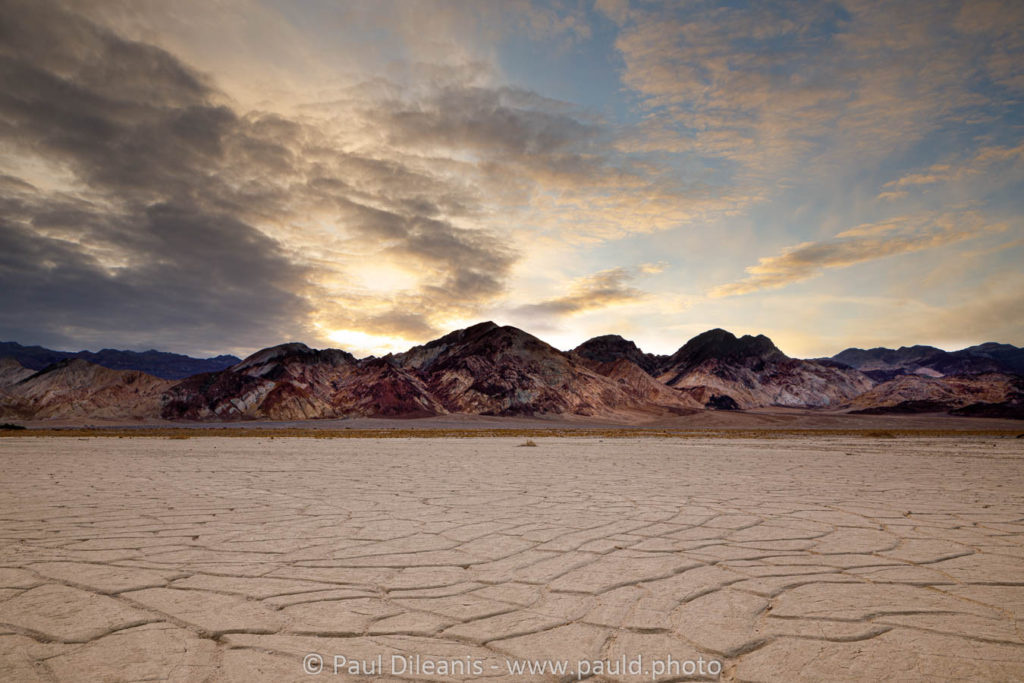
The next morning, we headed to some mud flats below Furnace Creek. This is a great sunrise location. We had a pleasant sunrise, but the clouds soon drifted in. blocking the sun as it climbed above the mountains.
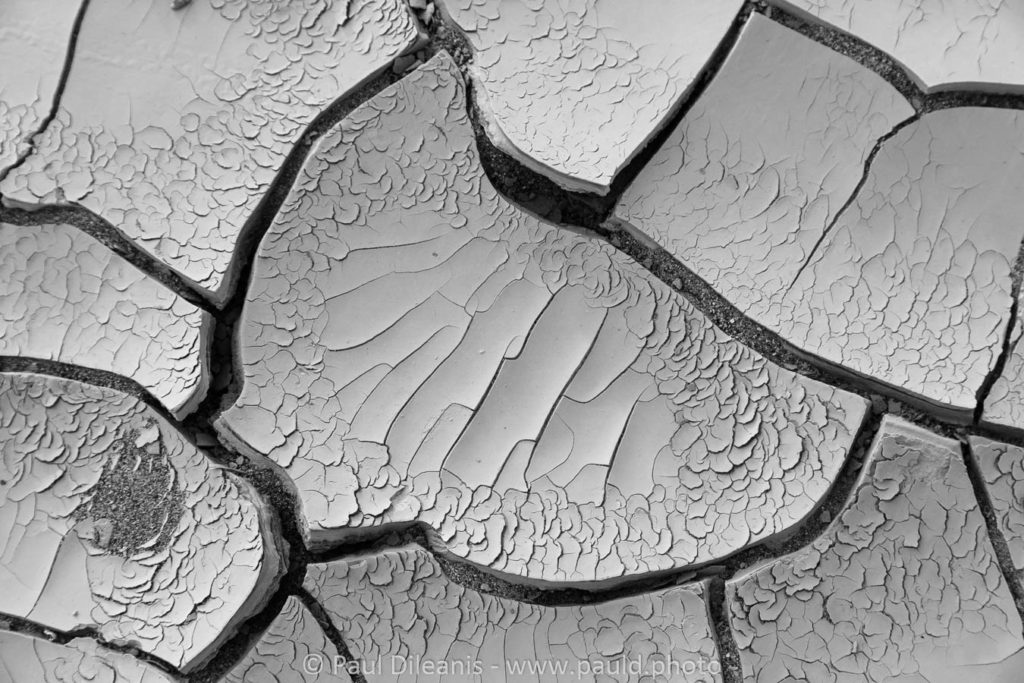
The hazy sunlight that accompanied us on our walk back to the cars provided some excellent light to photograph the many interesting patterns in the cracked mud.
After breakfast we headed over to the Harmony Borax Works to plan our Milky Way shot for Wednesday morning.
On the way back to the hotel for some more one on one training and to rest for the sunset we stopped for a brief natural history walk at Salt Creek to view the Desert Pupfish. This unique fish species survives in salty water that can reach temperatures over 100 degrees in the summer.
Salt Polygons
Tuesday afternoon we headed toward Badwater Basin to photograph the salt polygon formations at sunset.
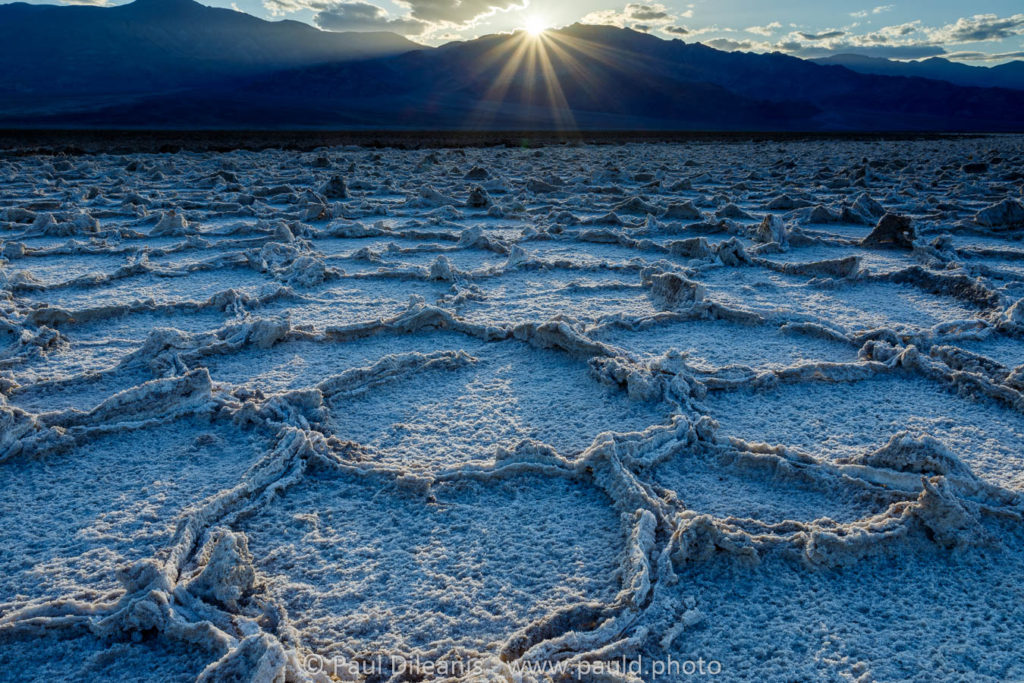
These salt polygons form when the drying mud cracks and the salt forms crystals along the cracks as water evaporates.
After sunset we headed for dinner at Furnace Creek then back to the hotel for a quick night photography orientation and early to bed. We had to be on the road at 3 AM Wednesday morning to capture the Milky Way.
Harmony Borax Works and Milky Way
Arriving at around 3:30 Am at the Harmony Borax works we quickly began preparing our cameras and setting up the low-level LED lights that would light up the 20 Mule team wagon and the ruins of the Borax Mill behind it.
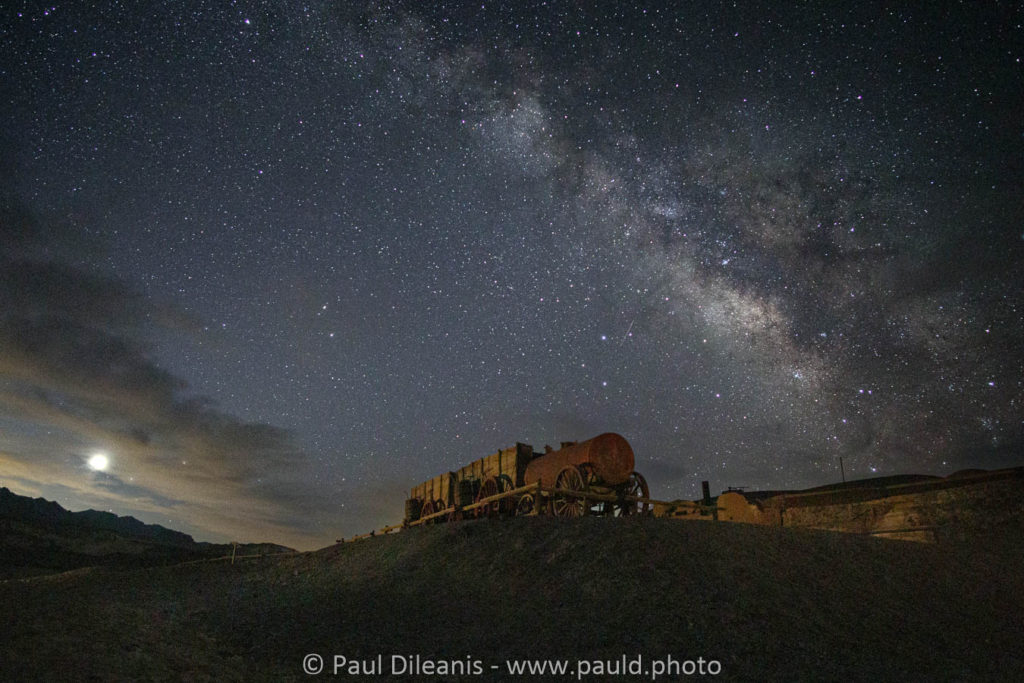
Here is the final image. The Milky Way arches over the wagon lit by our lights as Venus , Saturn and Mars rise behind a bank of clouds on the left.
Zabriskie Point
When the Milky Way began to fade at about 5:30 we packed up our gear and headed up to Zabriskie Point for the sunrise.
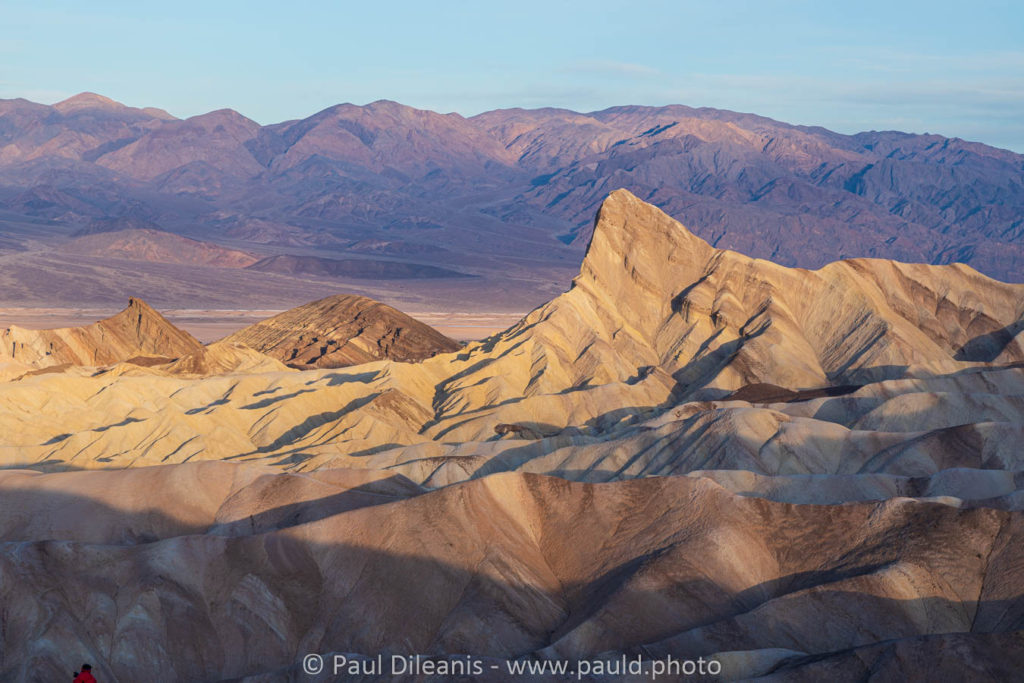
Manly Beacon as photographed from Zabriskie Point as it is illuminated by the light of the morning sun.

The eroded hills surrounding Zabriskie point are another highlight for photographers at Zabriskie Point. These hills are carved out of mud formations left by a lake that vanished thousands of years ago.
After the sunrise and a hearty well-earned breakfast (not to mention a few cups of coffee) we returned to the hotel for a presentation on how to process Milky Way Images.
Return to Mesquite Flat Dunes
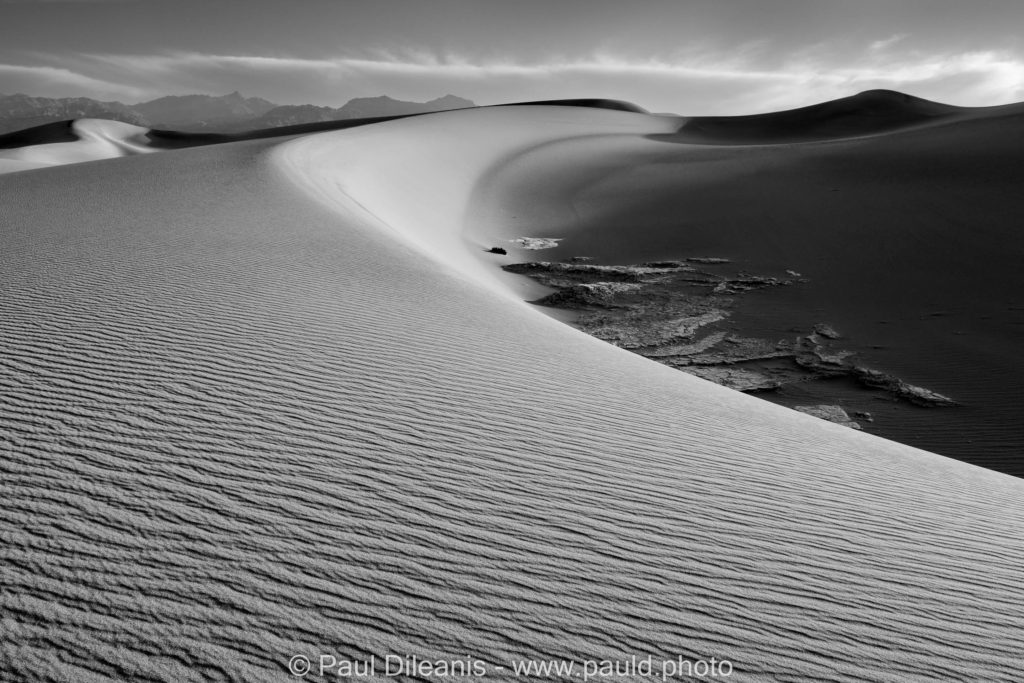
Wednesday morning, we returned to the dunes for one last sunrise. To our delight, the wind had done its job again and we were able to enjoy a footprint free photography experience before breakfast and beginning the drive home.